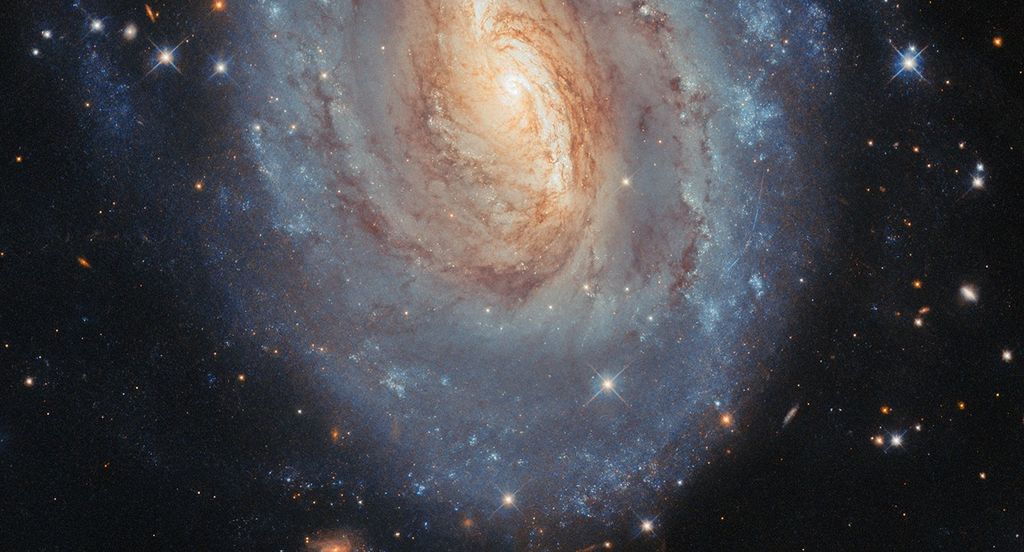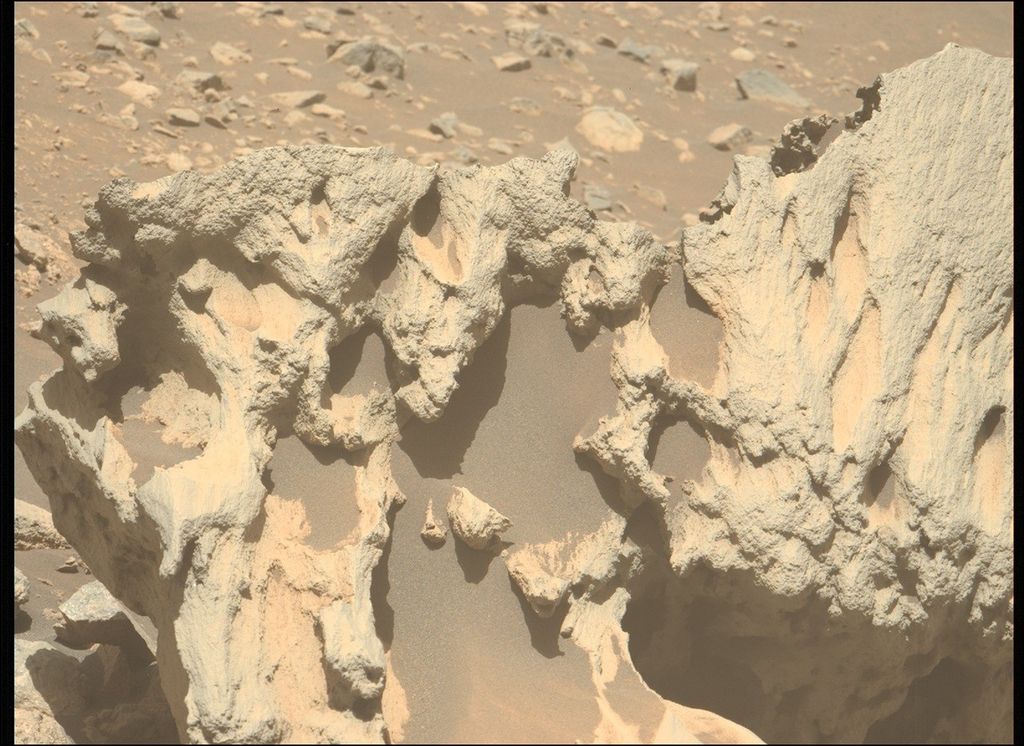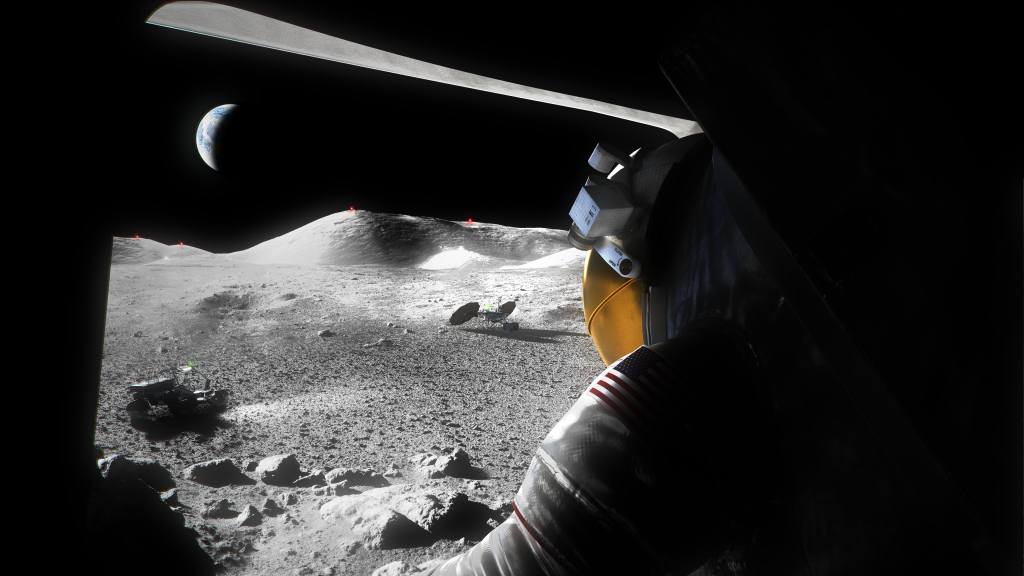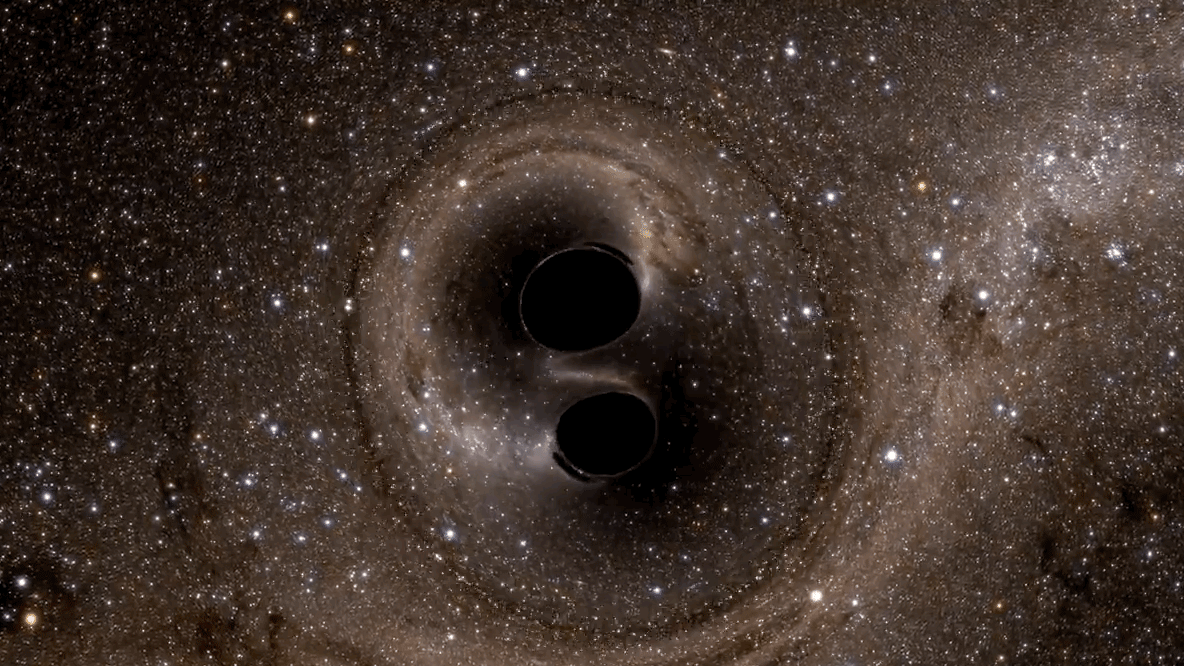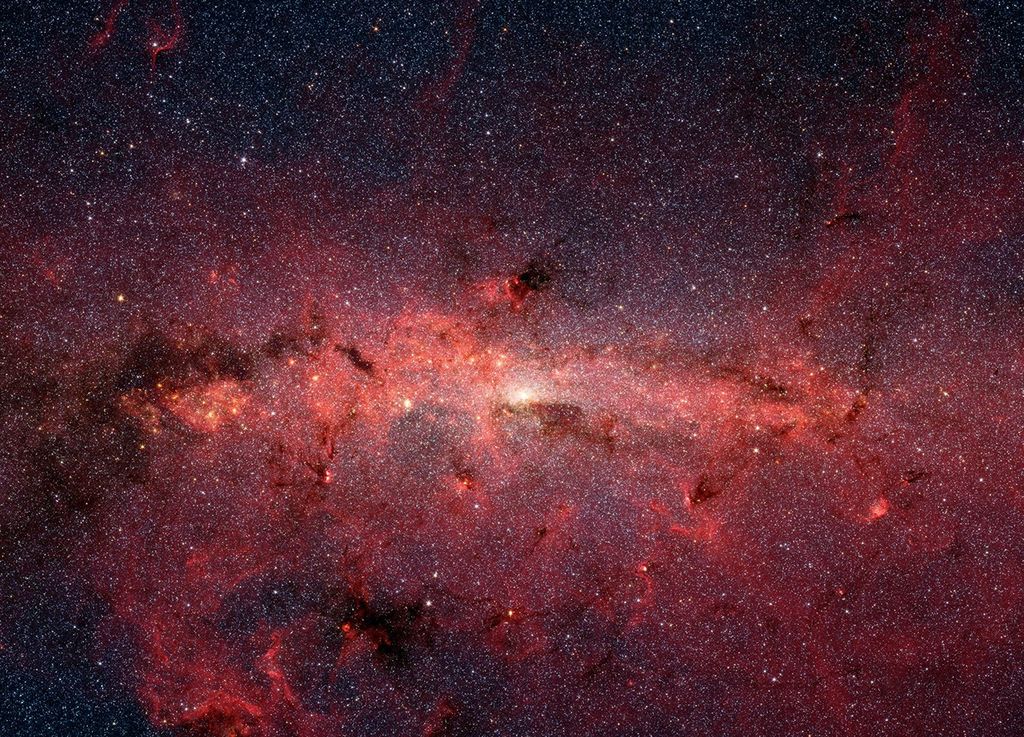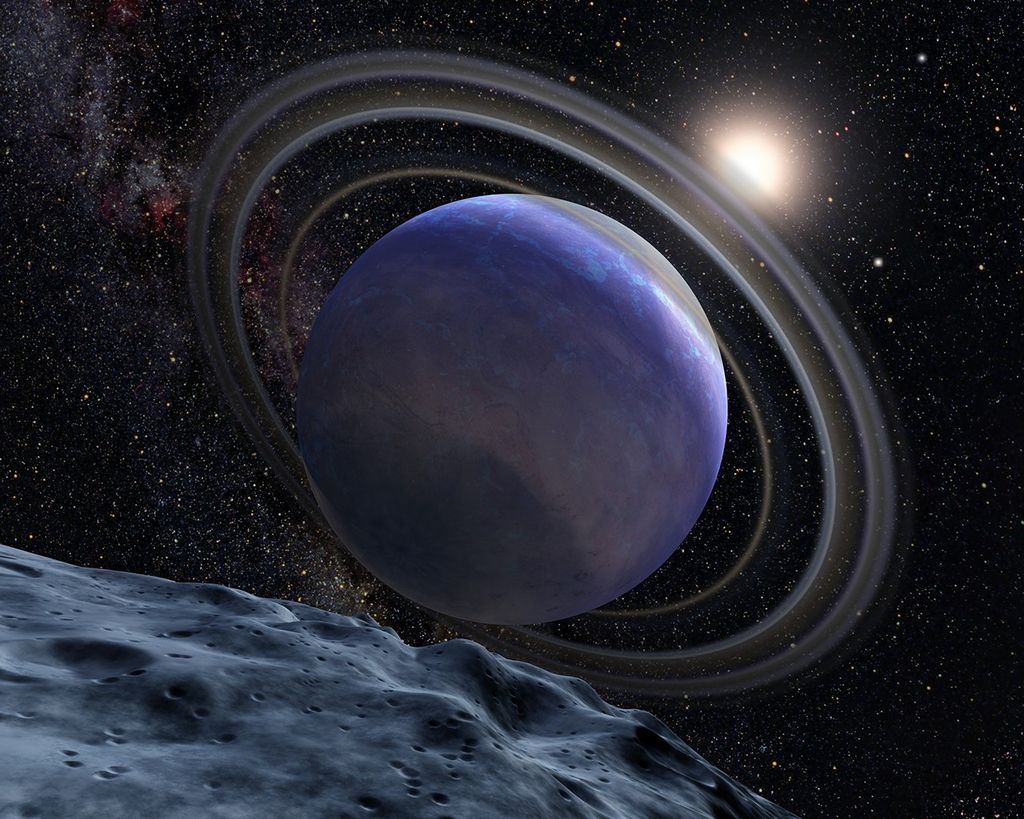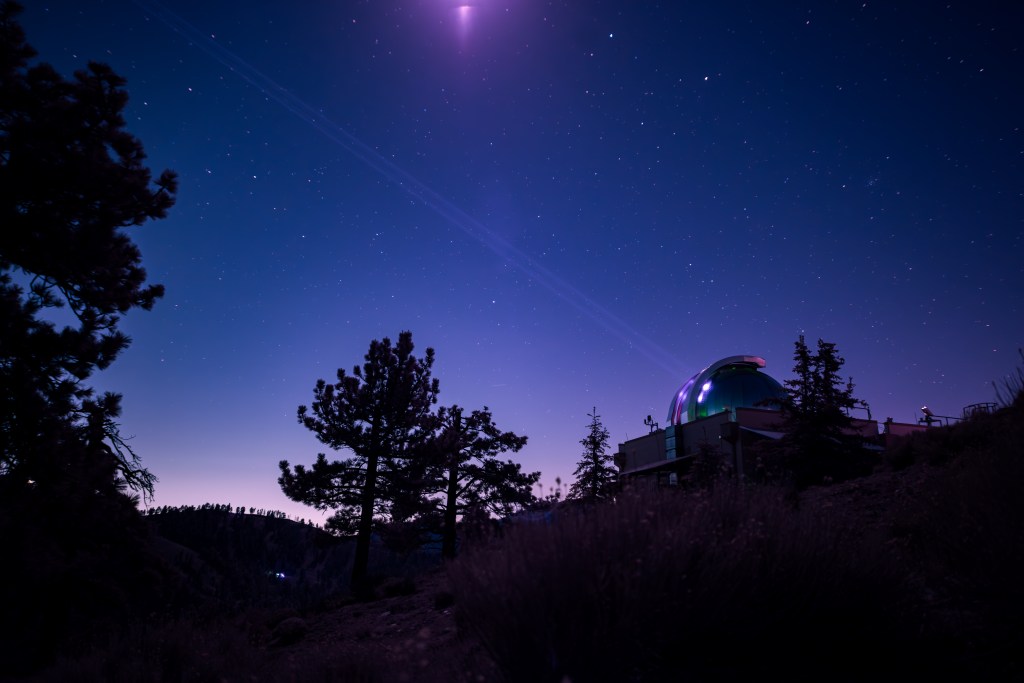1 min read
Peering into the Core of Globular Cluster Omega Centauri

Astronomers have used NASA's Hubble Space Telescope to peer into the center of a dense swarm of stars called Omega Centauri. Located some 17,000 light-years from Earth, Omega Centauri is a massive globular star cluster, containing several million stars swirling in locked orbits around a common center of gravity. The stars are packed so densely in the cluster's core that it is difficult for ground-based telescopes to make out individual stars. Hubble's high resolution is able to pick up where ground-based telescopes leave off, capturing distinct points of light from stars at the very center of the cluster.
Omega Centauri is so large in our sky that only a small part of it fits within the field of view of the Wide Field and Planetary Camera 2 (WFPC2) on the Hubble Space Telescope. Yet even this tiny patch contains some 50,000 stars, all packed into a region only about 13 light-years wide. For comparison, a similarly sized region centered on the Sun would contain about a half dozen stars.
The vast majority of stars in this Hubble image are faint, yellow-white dwarf stars similar to our Sun. The handful of bright yellow-orange stars are red giants that have begun to exhaust their nuclear fuel and have expanded to diameters about a hundred times that of the Sun. A number of faint blue stars are also visible in the image. These are in a brief phase of evolution between the dwarf stage and the red-giant stage, during which the surface temperature is high. The stars in Omega Centauri are all very old, about 12 billion years. Stars with a mass as high as that of our Sun have already completed their evolution and have faded away as white dwarfs, too faint to be seen even in the Hubble image.
The stars in the core of Omega Centauri are so densely packed that occasionally one of them will actually collide with another one. Even in the dense center of Omega Centauri, stellar collisions will be infrequent. But the cluster is so old that many thousands of collisions have occurred.
What happens when stars collide? These Hubble images were taken to help answer that question. When stars collide head-on, they probably just merge together and make one bigger star. But if the collision is a near miss, they may go into orbit around each other, forming a close binary star system.
Searching for a needle in a haystack, scientists have found two binary star systems in these Hubble images that may have had such an origin. Both of them are close pairs in which one component is a white dwarf that pulls gas off of its companion. When the gas falls onto the surface of the white dwarf, it is heated to the point that it emits ultraviolet light. These unusual emissions enabled scientists to pinpoint these two faint stars among the myriad of other faint stars in the cluster.
Omega Centauri is the most luminous and massive globular star cluster in the Milky Way. It is one of the few globular clusters that can be seen with the unaided eye. Named by Johann Bayer in 1603 as the 24th brightest object in the constellation Centaurus, it resembles a small cloud in the southern sky and might easily be mistaken for a comet.
This Hubble WFPC2 image was taken on June 11, 1997 in ultraviolet, red, and H-alpha filters. The science team, led by Dr. Adrienne Cool of San Francisco State University includes Jennifer Carson, a former SFSU student who is now at UCLA, Charles Bailyn at Yale and Jonathan Grindlay at Harvard. These data are currently being used by Jeff Carlin and Daryl Haggard, two SFSU students, to look for optical counterparts of X-ray sources recently discovered with the Chandra Observatory. This image was produced by the Hubble Heritage Team (STScI/AURA).
About the Object
- R.A. PositionR.A. PositionRight ascension – analogous to longitude – is one component of an object's position.13h 26m 45.88s
- Dec. PositionDec. PositionDeclination – analogous to latitude – is one component of an object's position.-47° 28' 36.69"
- ConstellationConstellationOne of 88 recognized regions of the celestial sphere in which the object appears.Centaurus
- DistanceDistanceThe physical distance from Earth to the astronomical object. Distances within our solar system are usually measured in Astronomical Units (AU). Distances between stars are usually measured in light-years. Interstellar distances can also be measured in parsecs.About 5.2 kpc (17,000 light-years)
- DimensionsDimensionsThe physical size of the object or the apparent angle it subtends on the sky.The image is 2.7 arcminutes (roughly 13 light-years) along the vertical. The entire cluster has a diameter of 450 light-years.
About the Data
- Data DescriptionData DescriptionProposal: A description of the observations, their scientific justification, and the links to the data available in the science archive.
Science Team: The astronomers who planned the observations and analyzed the data. "PI" refers to the Principal Investigator.Principal Astronomers: A. Cool (SFSU), J. Carson (UCLA), J. Carlin and D. Haggard (SFSU), C. Bailyn (Yale), J. Grindlay (Harvard/CfA) - InstrumentInstrumentThe science instrument used to produce the data.HST>WFPC2
- Exposure DatesExposure DatesThe date(s) that the telescope made its observations and the total exposure time.June 11, 1997, Exposure Time: 3 hours
- FiltersFiltersThe camera filters that were used in the science observations.F336W (U), F656N (H-alpha), F675W (R)
- Object NameObject NameA name or catalog number that astronomers use to identify an astronomical object.Omega Centauri, NGC 5139
- Object DescriptionObject DescriptionThe type of astronomical object.Core of Globular Cluster
- Release DateOctober 4, 2001
- Science ReleasePeering into the Core of a Globular Cluster
- Credit

Share
Details
Claire Andreoli
NASA’s Goddard Space Flight Center
Greenbelt, Maryland
claire.andreoli@nasa.gov

